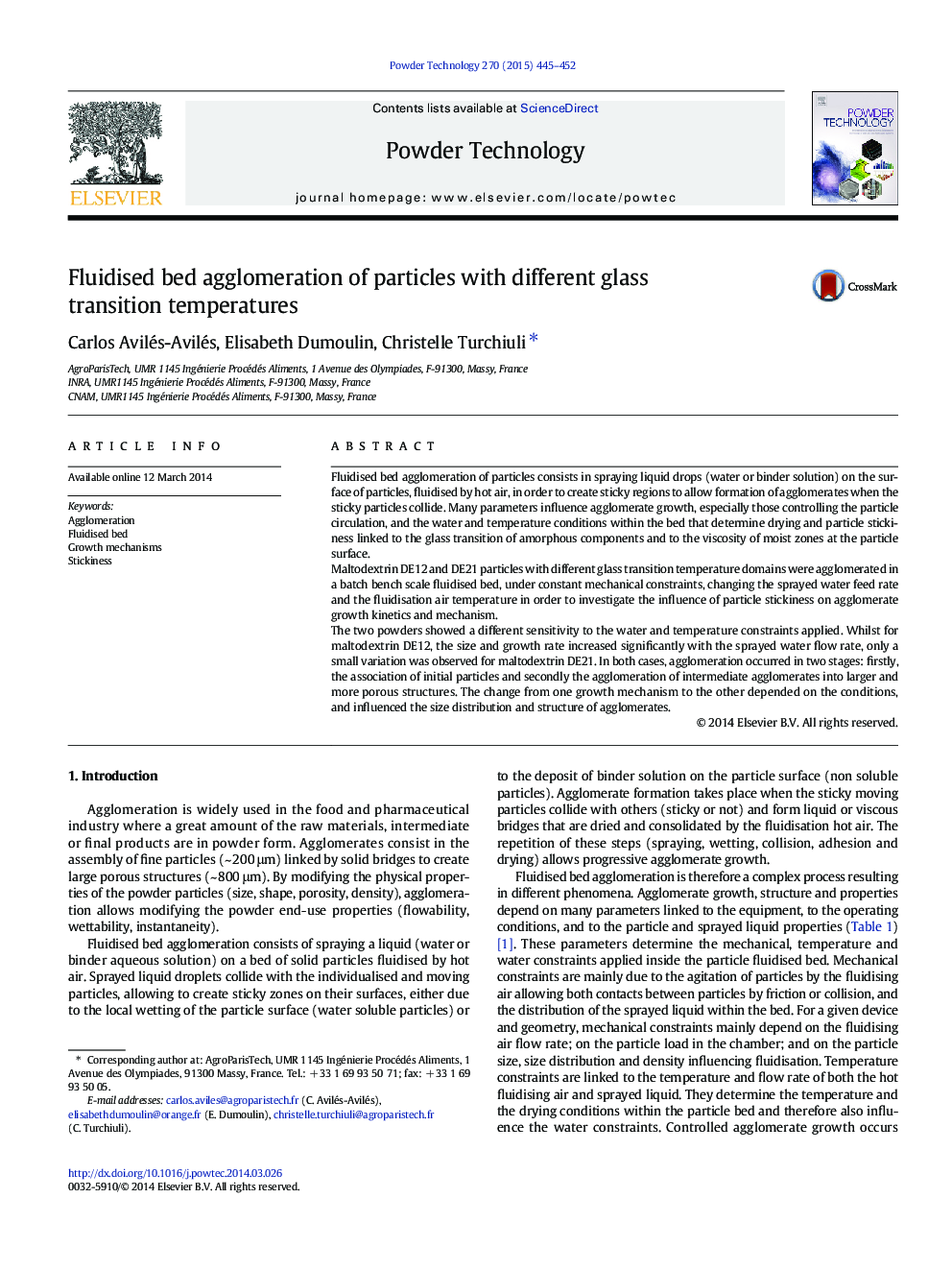| کد مقاله | کد نشریه | سال انتشار | مقاله انگلیسی | نسخه تمام متن |
|---|---|---|---|---|
| 235905 | 465652 | 2015 | 8 صفحه PDF | دانلود رایگان |
• Particle DE influenced sensitivity to water and temperature constraints.
• Similar growth mechanisms were observed for both maltodextrin particles.
• Initial particles first associate into intermediate structures.
• Particle size distribution was narrower for maltodextrin DE12 particles.
Fluidised bed agglomeration of particles consists in spraying liquid drops (water or binder solution) on the surface of particles, fluidised by hot air, in order to create sticky regions to allow formation of agglomerates when the sticky particles collide. Many parameters influence agglomerate growth, especially those controlling the particle circulation, and the water and temperature conditions within the bed that determine drying and particle stickiness linked to the glass transition of amorphous components and to the viscosity of moist zones at the particle surface.Maltodextrin DE12 and DE21 particles with different glass transition temperature domains were agglomerated in a batch bench scale fluidised bed, under constant mechanical constraints, changing the sprayed water feed rate and the fluidisation air temperature in order to investigate the influence of particle stickiness on agglomerate growth kinetics and mechanism.The two powders showed a different sensitivity to the water and temperature constraints applied. Whilst for maltodextrin DE12, the size and growth rate increased significantly with the sprayed water flow rate, only a small variation was observed for maltodextrin DE21. In both cases, agglomeration occurred in two stages: firstly, the association of initial particles and secondly the agglomeration of intermediate agglomerates into larger and more porous structures. The change from one growth mechanism to the other depended on the conditions, and influenced the size distribution and structure of agglomerates.
Maltodextrin DE12 and DE21 particles, with different stickiness, showed a different sensitivity to water and temperature constraints during fluidised bed agglomeration.Figure optionsDownload as PowerPoint slide
Journal: Powder Technology - Volume 270, Part B, January 2015, Pages 445–452
